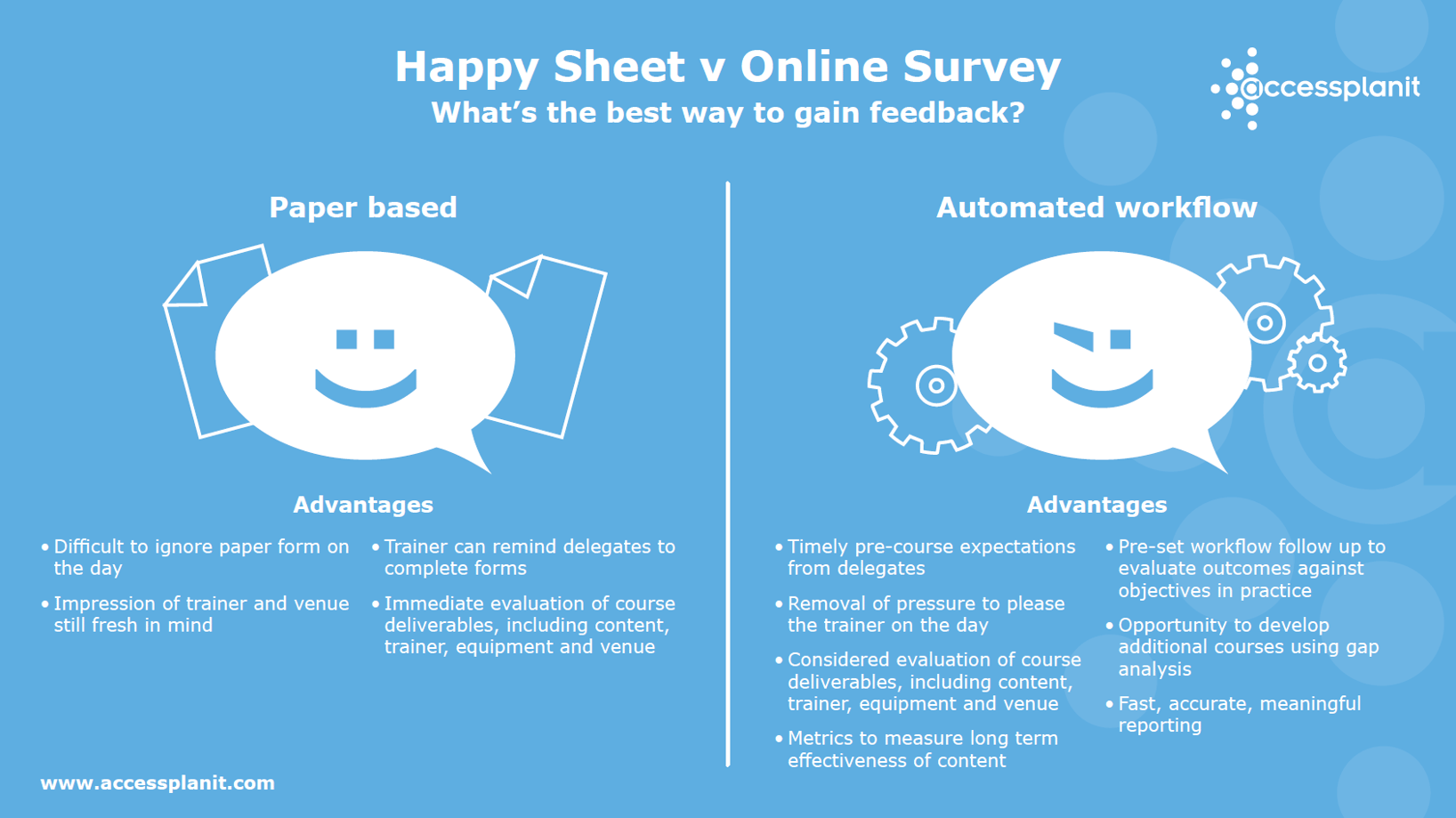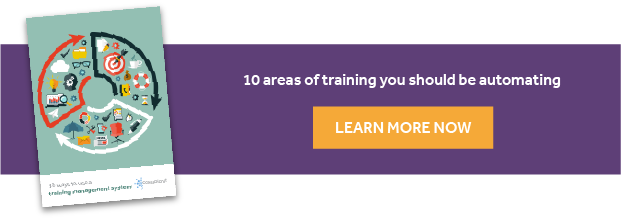How Can Feedback Improve Your Training Company?

“How do I know if my training courses are actually successful?” The question that is on all training and learning and development professionals' lips. This post looks at tried and tested methods of gathering and utilising quality feedback as well as exploring the key differences between the traditional happy sheet and online surveys. Once good quality feedback has been gathered it is all about using it effectively to make improvements for delegates as well as to the bottom line.
The most traditional way of gaining feedback has always been by handing out a paper form at the end of an event. Taking them back to the office to collate in a spreadsheet and unfortunately in a lot of cases never looking through that information again. Sound familiar? Surely there must be a more effective way.
How to gain quality feedback
The difference between feedback and quality feedback is gaining information that actually tells us something and what can be used as a basis to make improvements.
Ditch the happy sheet
Or at least use them alongside other methods of gathering feedback. Typically, happy sheets are completed at the end of a long session when the delegate is trying to get out of the door as soon as they can. This isn’t promising for gaining good quality feedback.
Technology now allows training companies to generate online evaluation forms or surveys that delegates can fill out in their own time providing the opportunity for much more thought out and accurate results. Check out the infographic below for the main differences and download it here.

Measure the long term benefits of the course
Make sure that you are finding out how the course is impacting delegates further down the line. By scheduling several follow up evaluation surveys, you can investigate not just the immediate course deliverables including venue, content and trainer, but more importantly how the content matches the delegate’s needs over a period of time. It is all well and good that the learner enjoyed the course but if they don’t remember what was covered 3 months down the line will their employer really be interested in sending them on another course?
Designing the right questionnaire
Ensuring that you ask the right questions at the right time is crucial to gaining quality feedback. What is it that you are interested in? How the course met the delegate’s expectations or how satisfied they were with the venue?
Timing is key, and it could be said that there are 4 main stages when feedback can be gathered; before the course, mid-way through, at the end, or at a later date as discussed earlier. Each stage provides the opportunity to collect a different kind of feedback and is extremely easy to achieve using an automated system such as an LMS.
Additionally use an evaluation survey as an opportunity to update and improve your service offering as well as for up selling. Ask delegates if there are any other courses that they would be interested in. If there is enough interest and you currently don't provide it - start! If you already run the course then send on further information about when and where it is next being held.
Use the information you have gathered
What use is gaining all of this feedback if you don’t do anything with it? A training management system allows you to collate all of these results and generate reports to highlight trends and weaknesses. This also gives you the opportunity to establish any gaps to develop any additional courses to meet the need thus increasing your bottom line.
Other related articles:
The Importance Of Feedback In Training Companies



